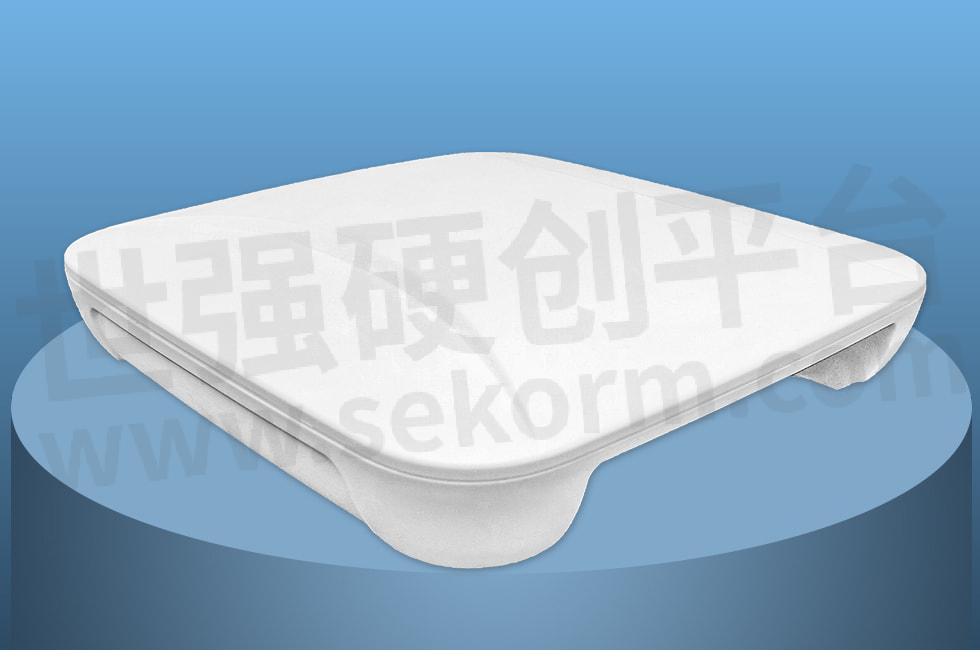IBeacon Passive Positioning Technology Principle, Precise Indoor Positioning and Navigation

When the Bluetooth function in the mobile device is turned on, it will receive signal data sent by the iBeacon base station. After receiving the signal, the device estimates the distance between itself and the iBeacon base station based on the Received Signal Strength Indication (RSSI). Through the cross coverage and distance calculation of multiple iBeacon base station signals, combined with relevant positioning algorithms, it achieves the localization of mobile devices.
For example, in a shopping mall, multiple iBeacon base stations are deployed in different areas. When you enter the shopping mall with a Bluetooth enabled phone in hand, the phone will receive signals from different base stations. The system determines your distance to each base station based on the strength of these signals, and then determines your approximate location in the mall, pushing you relevant store discount information, navigation routes, etc.

Accurate indoor positioning and navigation require the use of iBeacon technology, which means that by using low-power Bluetooth technology, iBeacon base stations can automatically create a signal area. When a device enters this area, the smartphone will receive and detect the ID signal and signal strength of the iBeacon base station, and locate it based on the coordinate information of the pre deployed iBeacon nodes.
IBeacon, as a near-field sensor(near-field: short distance wireless transmission) that connects offline scenes, allows everything to have its position coordinates and can be compatible with Android and iOS mobile phones and terminals. Therefore, iBeacon technology has become the main means of commercial indoor positioning.
To overcome the adverse effects of the indoor environment on positioning accuracy in high-precision positioning scenarios, a weighted correction positioning algorithm based on trilateration positioning can be combined. The positioning system first uses the trilateration positioning algorithm to estimate the initial position of the user and then combines the position estimation obtained from the initial positioning with the user's position information for filtering processing. Through filtering, it avoids problems such as position jitter caused by measurement errors, thereby improving positioning accuracy.
A positioning system prototype has been designed and developed based on existing hardware devices and a proposed weighted correction positioning algorithm. A high-precision indoor positioning method based on signal strength has been implemented, with an average positioning accuracy of 1-3 meters, meeting the requirements of universal computing accuracy for indoor positioning solutions.
- +1 Like
- Add to Favorites
Recommend
- What are the Functions of the Smart Construction Site Personnel Positioning System?
- How To Choose The Smart Home IoT WiFi Module?
- SKYLAB and MMC developed Long-endurance UAV Power Line Patrol Automatic Solution
- SKYLAB provides UAV Petrochemical Pipeline Inspection Solution
- SKYLAB‘s Parking Lot Bluetooth Positioning and Navigation Solution
- SKYLAB launched a GPS positioning system solution for Logistics truck GPS Positioning Tracking Application
- SKYLAB GPS positioning technology help people solve the problem of lost pets and find their pets faster,more conveniently
- SKYLAB Has Launched a Bluetooth Indoor Positioning and Navigation System Solution
This document is provided by Sekorm Platform for VIP exclusive service. The copyright is owned by Sekorm. Without authorization, any medias, websites or individual are not allowed to reprint. When authorizing the reprint, the link of www.sekorm.com must be indicated.






























































































































































































































































































































































































































































































































































































































































































































































































































































































